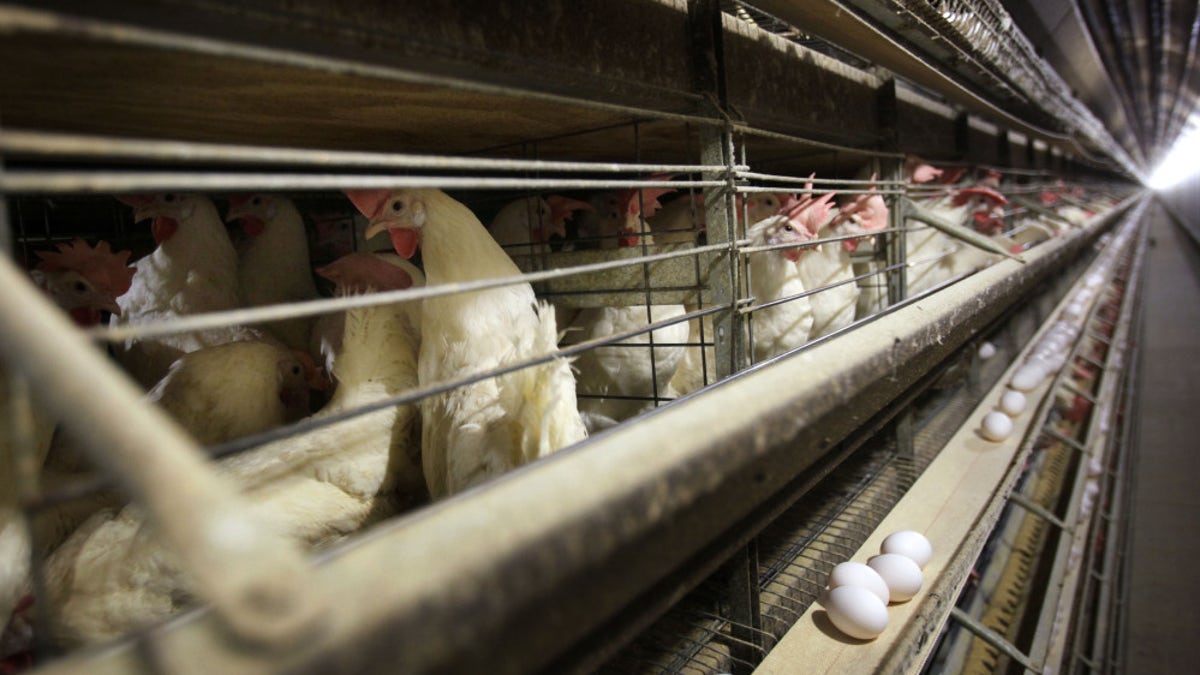
Inside a poultry farm in Iowa. Iowa is the nation's largest egg producer.
In the U.S., there are about 302 million egg-laying hens, producing over 80 billion eggs annually.
Female chickens are big business, bringing in over $10 billion each year for the nation’s egg producers. But what happens to the male chickens?
Since they don’t lay eggs, male chicks aren’t valuable to farmers. Nor are they sold as meat because the breeds of chicken that are raised for egg production are different from those that are raised for meat, according to the Washington Post.
When they’re born, male chicks are killed immediately in a process known as culling. It’s an industry-wide practice that results in the deaths of millions of baby chickens a year.
WARNING: GRAPHIC CONTENT
But after mounting pressure from animal rights groups and technological farming advanced, United Egg Producers, which represents egg farmers that produce 95 percent of the eggs domestically, announced plans to stop the practice of culling by 2020.
In a statement released Thursday, United Egg Producers President and CEO Chad Gregory, said:
“We are aware that there are a number of international research initiatives underway in this area, and we encourage the development of an alternative with the goal of eliminating the culling of day-old male chicks by 2020 or as soon as it is commercially available and economically feasible.”
One scientific option lies with in-oxo sexing technology that can identify the future chick's gender inside the fertilized egg. With this technology, male chicks will never be born to be ground, gassed or suffocated, methods that hatcheries employ to get rid of excess birds who can not lay eggs.
The Humane League, which worked with United Egg Producers for the commitment, hailed the decision as a historic victory.
“United Egg Producer’s decision to end its support of culling baby male chicks is historic, as it will virtually eliminate this practice in the American egg industry,” said David Coman-Hidy, Executive Director of The Humane League. “We are proud to have played such a pivotal role in doing away with this barbaric convention and to help pave the way to a more humane future. It is clear that chick culling will soon be a thing of the past in the United States."
But the group is still dissatisfied with the way female egg laying hens are treated in large farming operations.
"Egg layers are bred to be egg-laying machines who can pump out hundreds of eggs each year,"said Coman-Hidy.
"They're expected to live for approximately one year, typically confined to a tiny cage. On the other hand, broilers are bred to be grotesquely large, growing to a huge size within one month."
Newly born female chicks may be spared from early death but they usually spend most of their lives in small cages where they are expected to lay eggs, unable to spread their wings, before they are eventually slaughtered.
The treatment of caged birds—or those that are never permitted outside—has led several food companies including Trader Joe’s, Denny’s and Wendy’s to pledge using only cage-free eggs within the next few years.
